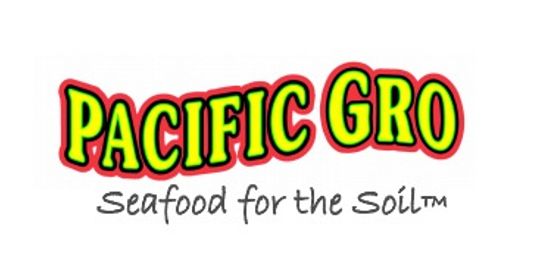Seafood for the Soil----a short message that serves as both the tagline for Washington –based Pacific Gro and an apt description of its product line.
“We sell two products,” said Marketing Director Warren Shoemaker, citing the firm’s OMRI approved Organic Liquid Fertilizer with Biochar and its organic-certified partner Pacific Gro Oceanic Hydrolysate.

Organic Liquid Fertilizer with Biochar
Founded in 2001, predating the National Organic Program standards, Pacific Gro has used fish as a fertilizer since its inception. Shoemaker points out that fish have by used to “fertilize” corn crops by the Mayans, Incas and Native Americans centuries ago. Dead fish was buried alongside the plant to help it grow.
While fish fertilizer is a well-known input for organic production, Shoemaker said it is still misunderstood. He said many growers use it exclusively as a nitrogen source, but it is much more than that.
“It is also a good source of calcium, which may be the most important nutrient it contains,” he said.
Pacific Gro products are essentially made from fish scraps. Initially, the company used salmon scraps exclusively, but the products now also include micronized crab and shrimp shells, in a patented process developed by company in 2013. The material is sourced from processors of ocean-caught seafood and stabilized with acid. The resulting “Seafood for the Soil” stimulates soil microbiology, especially beneficial fungi, according to Shoemaker.

The company’s website explains that in order to achieve the highest bio-activity and maintain the integrity of nutrients, Pacific Gro digests the protein, bone and shell in a vigorous vortex at room temperature. All ingredients are compliant with organic certification requirements and listed for organic food production.
Shoemaker said there are a half dozen fish fertilizer firms in the country but Pacific Gro distinguishes itself by including fish oil and fatty acids in the fish fertilizers it produces. He said other manufacturers use heat in their processing of the scraps to achieve higher nitrogen content, which he claims is unnecessary. “Because Pacific Gro is cold processed hydrolysate, it has more diverse and plentiful microbes and enzymes and stimulates higher biological activity,” says the website.
Shoemaker reiterated that the biggest misperception when using a fish fertilizer is that nitrogen is the most important component. He said conventional growers transitioning to organics tend to think the nitrogen is all important and concentrate on that. He believes longtime organic growers understand that it is the biological activity in the soil that you are trying to improve, not just replacing nitrogen. “Seventy-eight percent of air is nitrogen. Getting nitrogen is not the issue,” he said.
Organic apple orchard that was treated with Pacific Gro’s “Seafood for the Soil”
When the product is used properly and left to do its job, Shoemaker said growers will note increased growth of beneficial fungi, such as mushrooms, in their orchards and vineyards. He added that these fish fertilizer do not tend to be used by vegetable growers as they don’t tend to see increased fungal activity as a positive.
Pacific Gro sells to farmers all over the country but Shoemaker said they have achieved the best success with fruit growers in Washington, Oregon and California and dryland farmers in Canada, which has been a relatively new source of business. While those dryland growers use the product at a very low level, they tend to grow on huge plots of land (10,000 acres or more) so even low application rates produce big sales, and also very big results.






